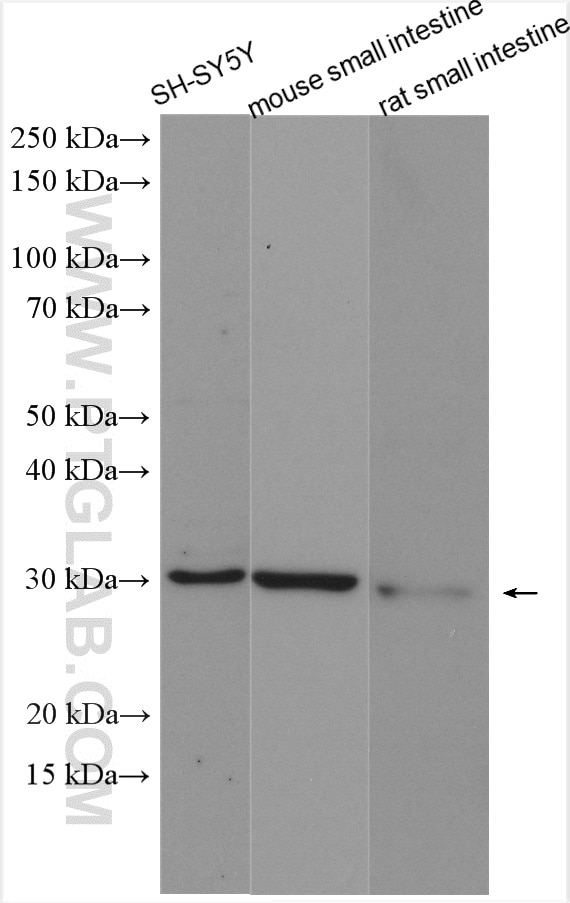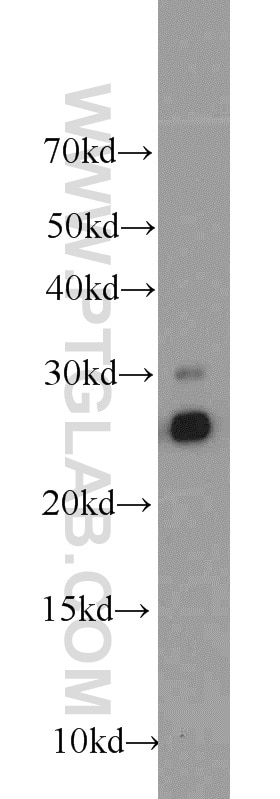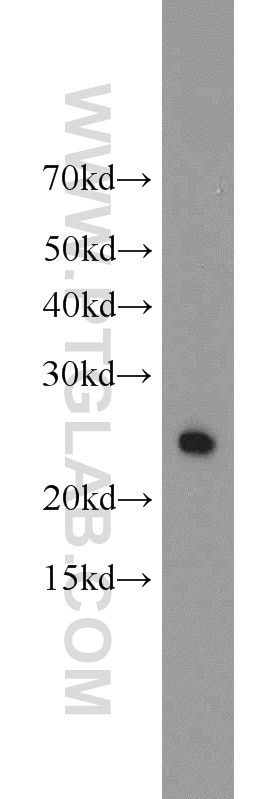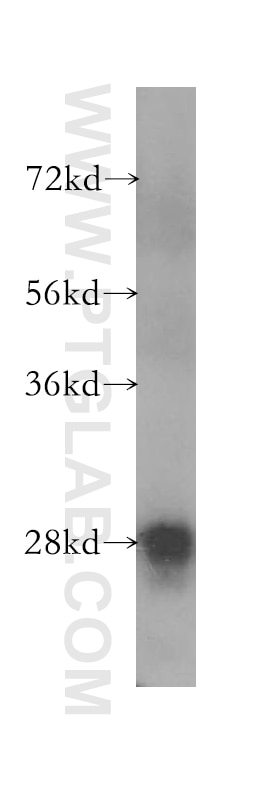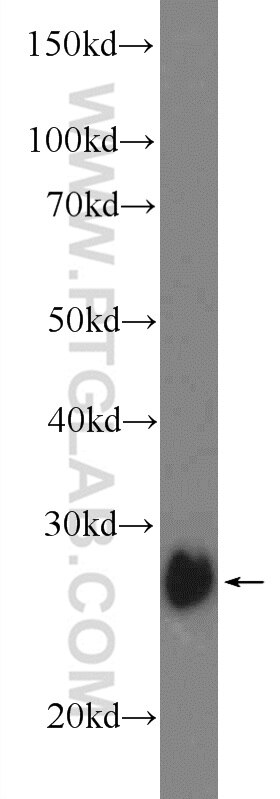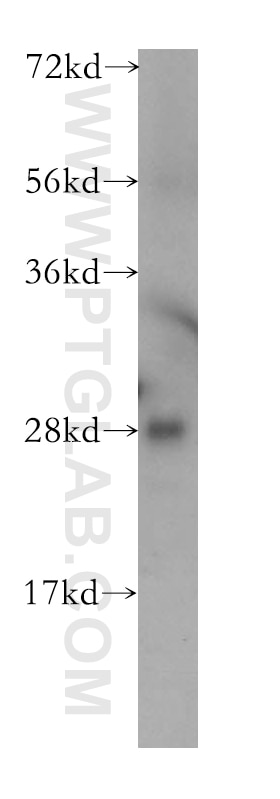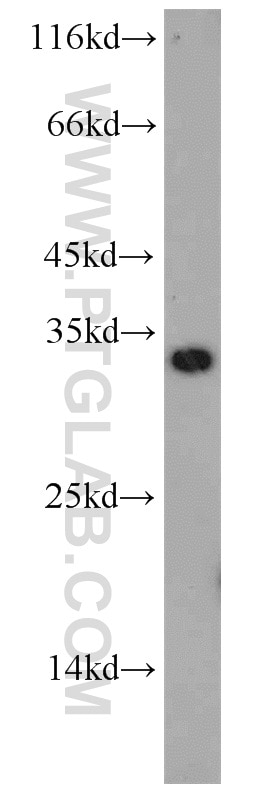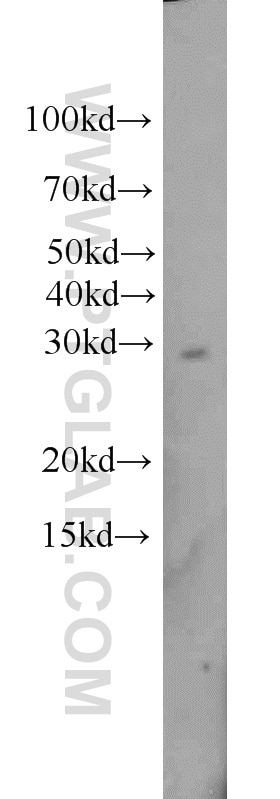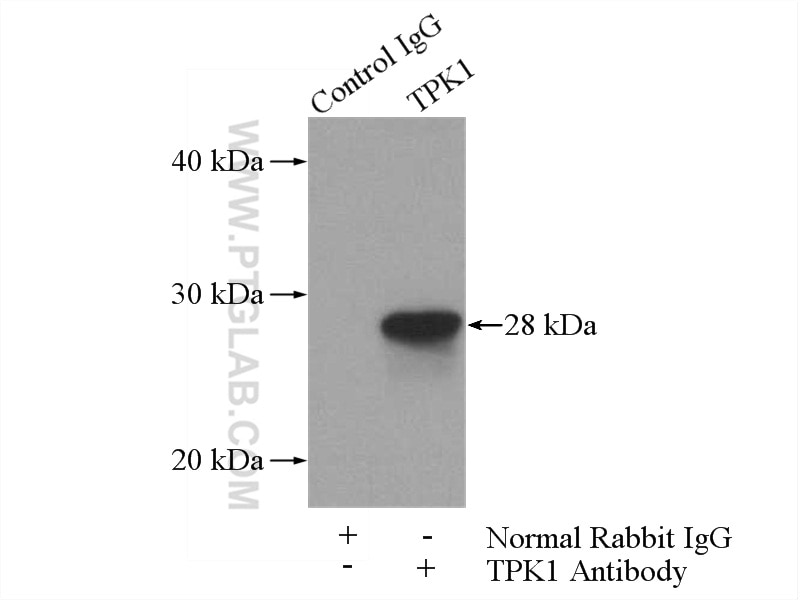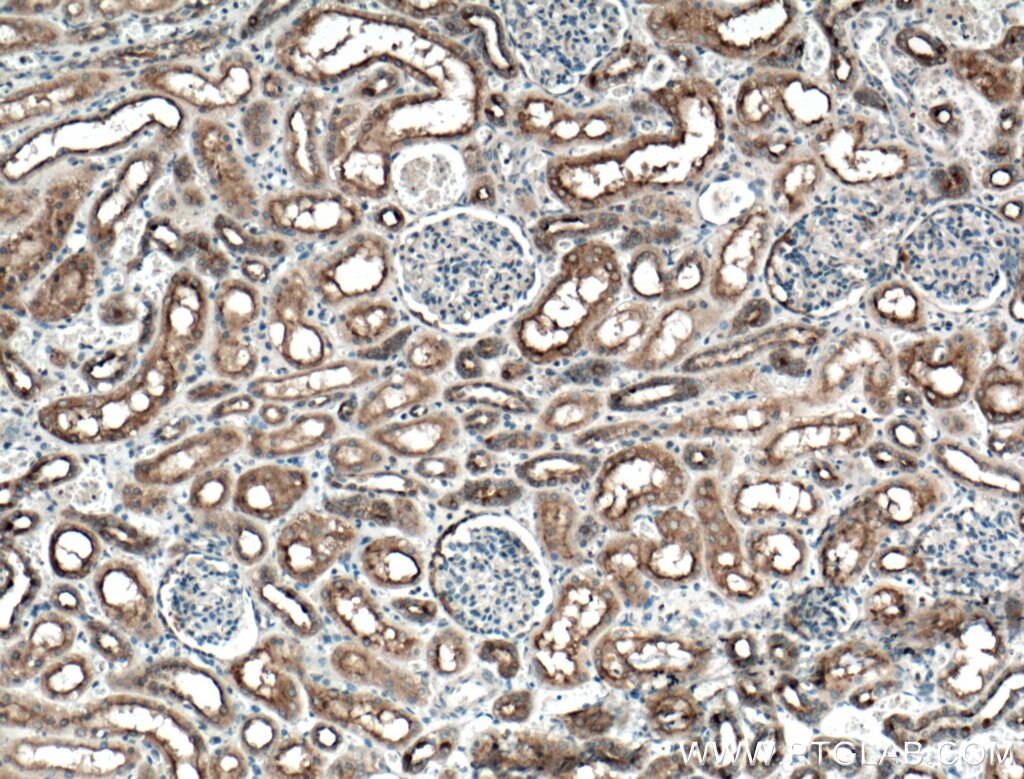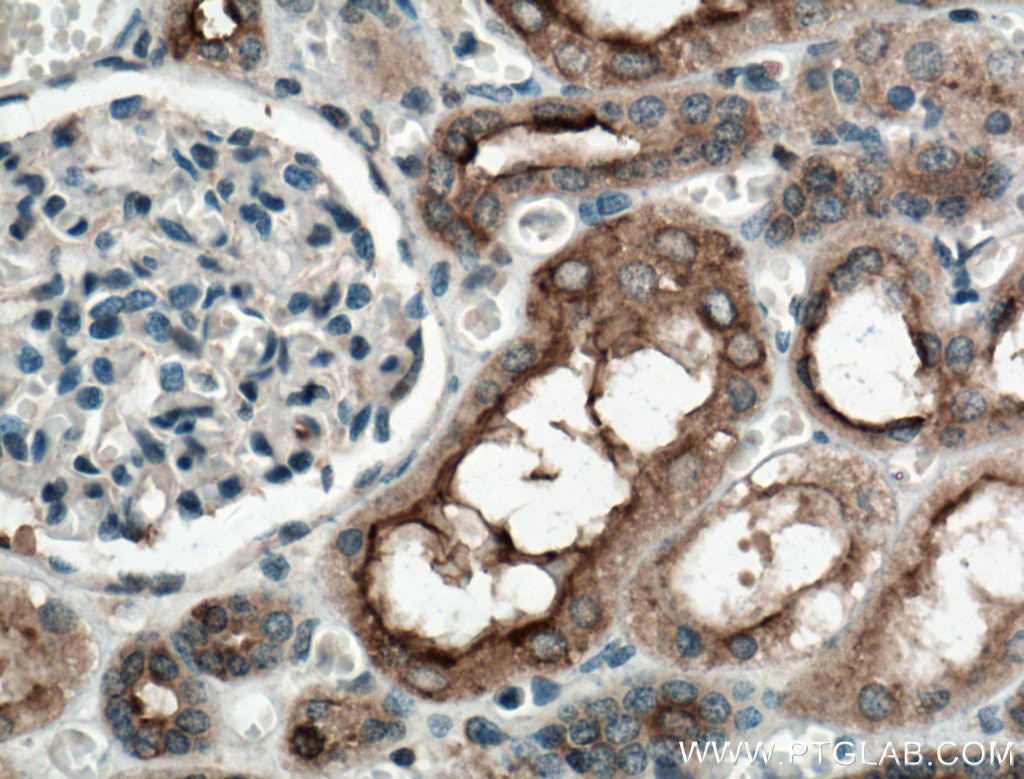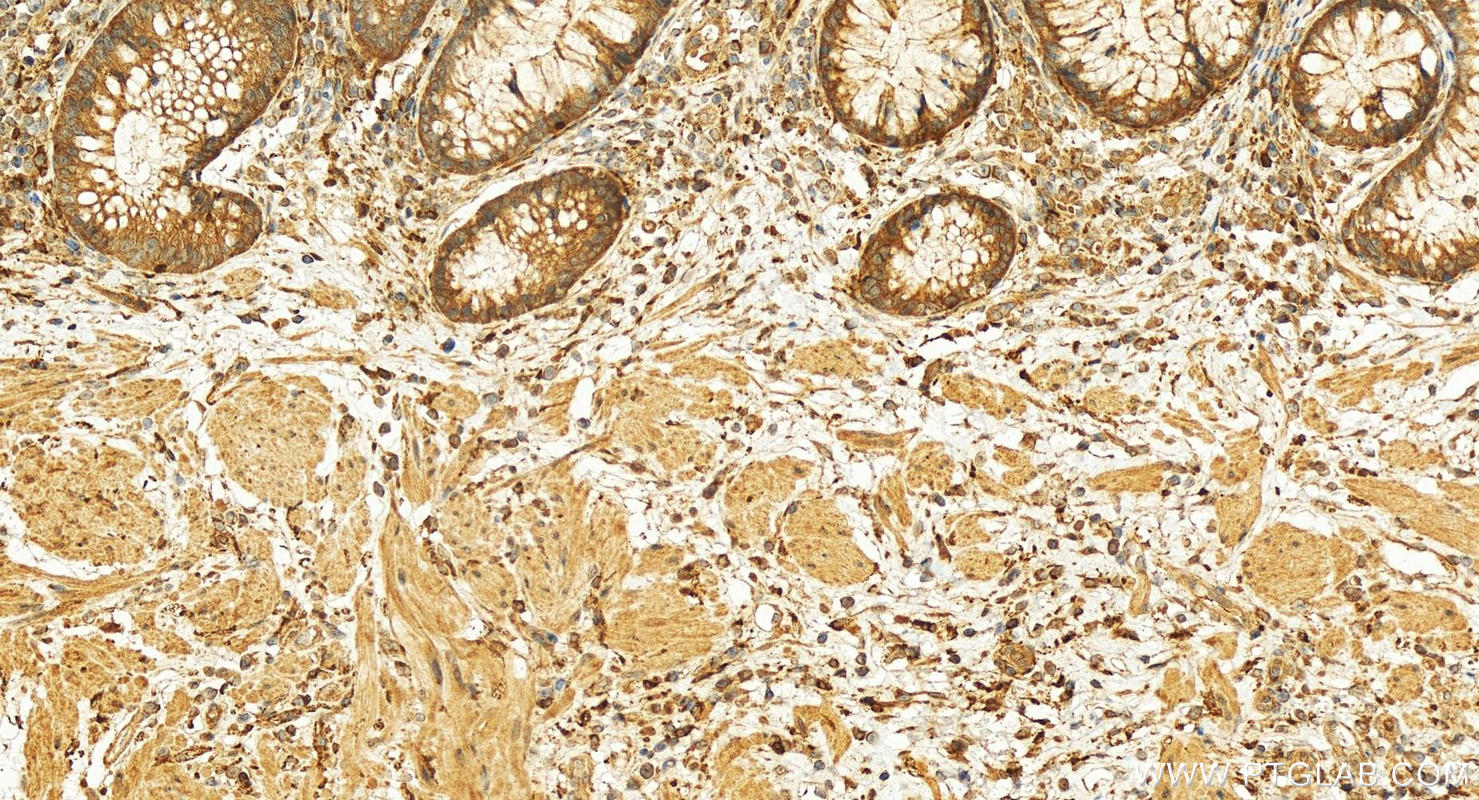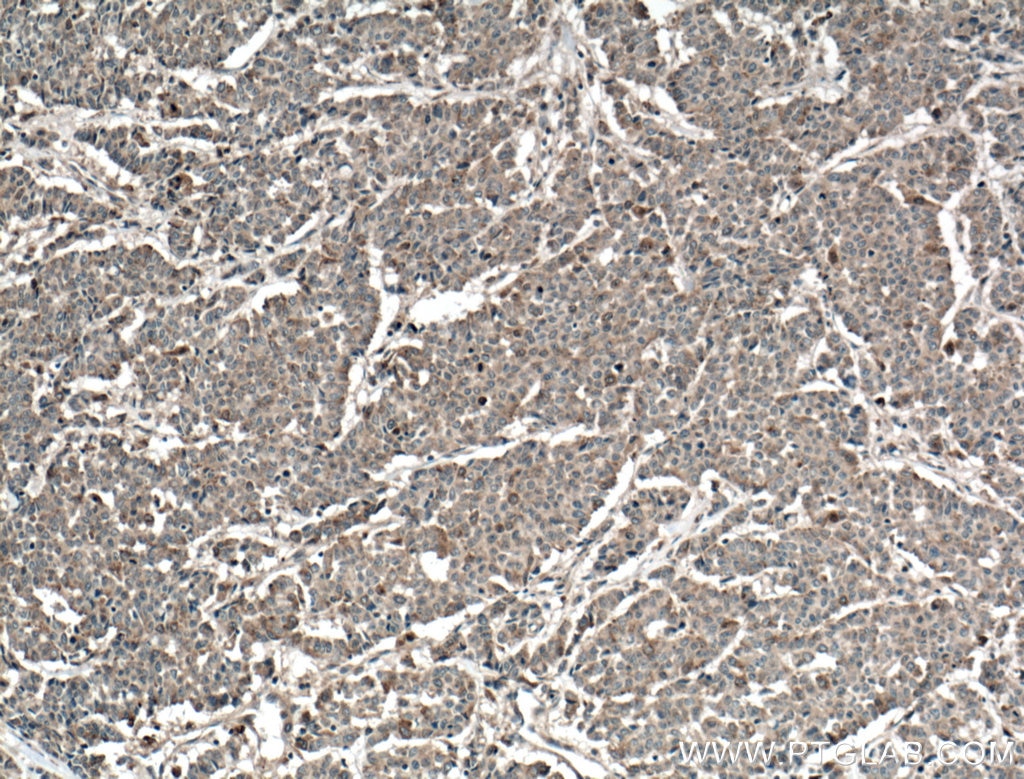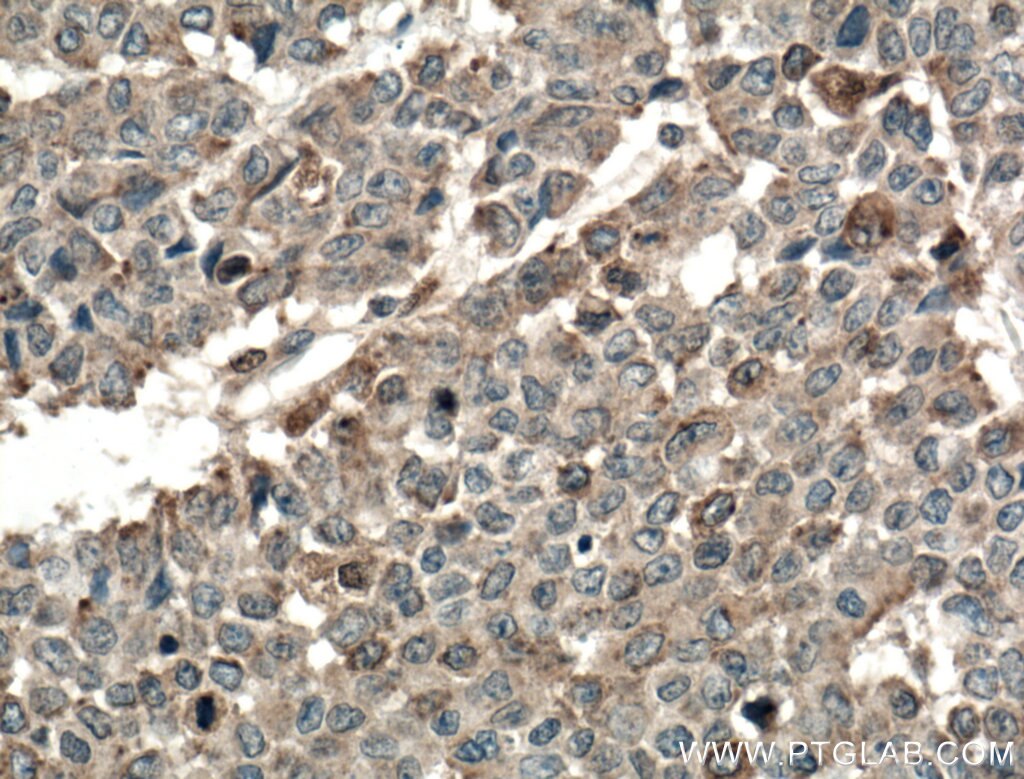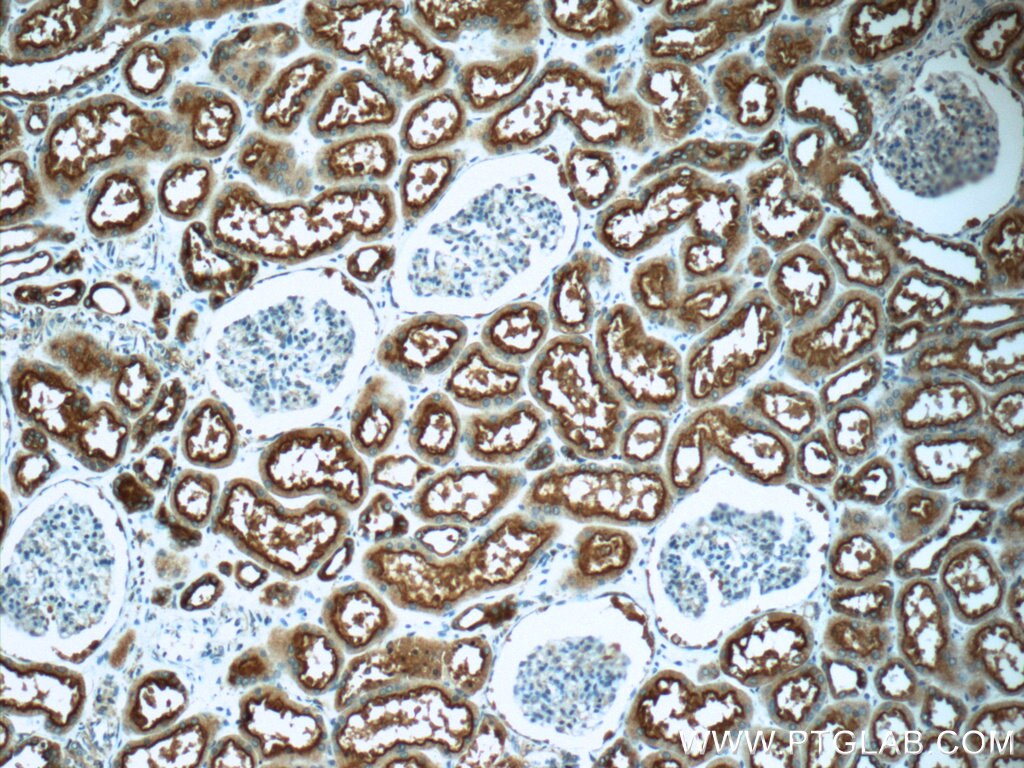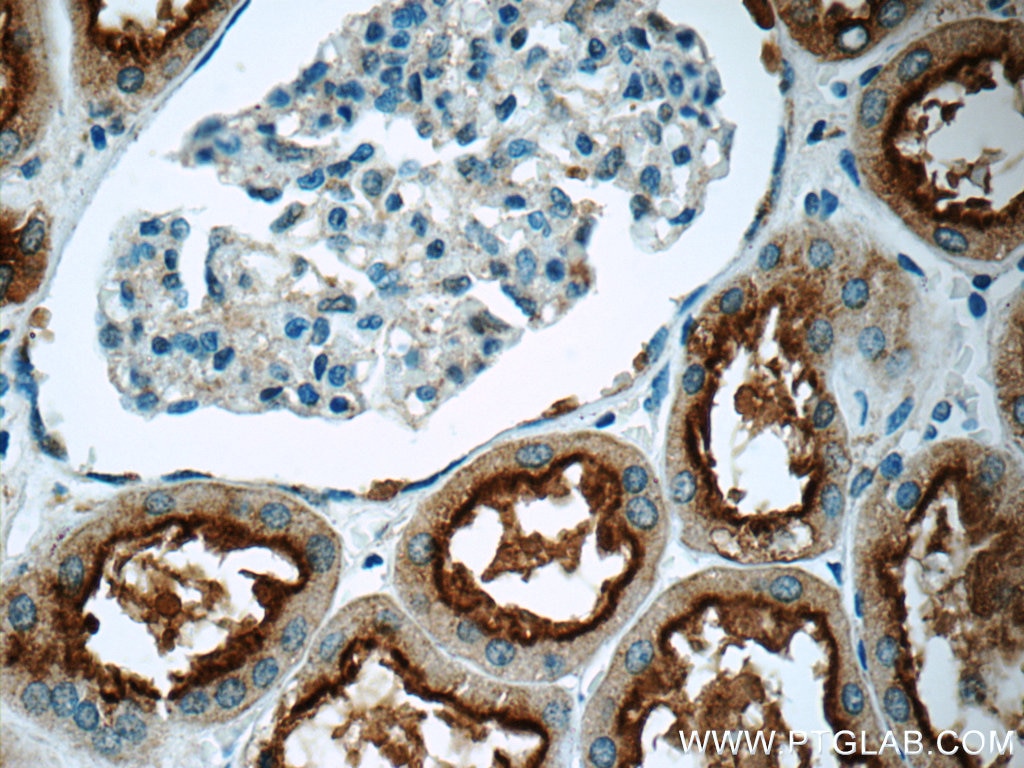Validation Data Gallery
Tested Applications
| Positive WB detected in | SH-SY5Y cells, HEK-293 cells, human small intestine tissue, mouse testis tissue, L02 cells, mouse small intestine tissue, mouse kidney tissue, rat small intestine tissue |
| Positive IP detected in | mouse kidney tissue |
| Positive IHC detected in | human kidney tissue, human colon cancer tissue Note: suggested antigen retrieval with TE buffer pH 9.0; (*) Alternatively, antigen retrieval may be performed with citrate buffer pH 6.0 |
Recommended dilution
| Application | Dilution |
|---|---|
| Western Blot (WB) | WB : 1:1000-1:8000 |
| Immunoprecipitation (IP) | IP : 0.5-4.0 ug for 1.0-3.0 mg of total protein lysate |
| Immunohistochemistry (IHC) | IHC : 1:200-1:800 |
| It is recommended that this reagent should be titrated in each testing system to obtain optimal results. | |
| Sample-dependent, Check data in validation data gallery. | |
Published Applications
| KD/KO | See 1 publications below |
| WB | See 10 publications below |
Product Information
10942-1-AP targets TPK1 in WB, IHC, IP, ELISA applications and shows reactivity with human, mouse, rat samples.
| Tested Reactivity | human, mouse, rat |
| Cited Reactivity | human, mouse, rat |
| Host / Isotype | Rabbit / IgG |
| Class | Polyclonal |
| Type | Antibody |
| Immunogen |
CatNo: Ag1404 Product name: Recombinant human TPK1 protein Source: e coli.-derived, PGEX-4T Tag: GST Domain: 11-243 aa of BC014552 Sequence: LLSTGNLKYCLVILNQPLDNYFRHLWNKALLRACADGGANRLYDITEGERESFLPEFINGDFDSIRPEVREYYATKGCELISTPDQDHTDFTKCLKMLQKKIEEKDLKVDVIVTLGGLAGRFDQIMASVNTLFQATHITPFPIIIIQEESLIYLLQPGKHRLHVDTGMEGDWCGLIPVGQPCMQVTTTGLKWNLTNDVLAFGTLVSTSNTYDGSGVVTVETDHPLLWTMAIKS 相同性解析による交差性が予測される生物種 |
| Full Name | thiamin pyrophosphokinase 1 |
| Calculated molecular weight | 28 kDa |
| Observed molecular weight | 28 kDa |
| GenBank accession number | BC014552 |
| Gene Symbol | TPK1 |
| Gene ID (NCBI) | 27010 |
| RRID | AB_2205647 |
| Conjugate | Unconjugated |
| Form | |
| Form | Liquid |
| Purification Method | Antigen affinity purification |
| UNIPROT ID | Q9H3S4 |
| Storage Buffer | PBS with 0.02% sodium azide and 50% glycerol{{ptg:BufferTemp}}7.3 |
| Storage Conditions | Store at -20°C. Stable for one year after shipment. Aliquoting is unnecessary for -20oC storage. |
Background Information
TPK1(Thiamin pyrophosphokinase 1) is also named as PP20(placental protein 20) and belongs to the thiamine pyrophosphokinase family. It is a cellular enzyme involved in the regulation of thiamine metabolism and catalyzes the conversion of thiamine, a form of vitamin B1, to thiamine pyrophosphate (TDP, or TPP). There is no difference in TPK1 expression in cultured fibroblasts from normal subjects or from patients with thiamine-responsive megaloblastic anemia(PMID:11342111). It can exsit as a dimer(PMID:21552434). Defects in TPK1 are the cause of thiamine metabolism dysfunction syndrome type 5, episodic encephalopathy type (THMD5).
Protocols
| Product Specific Protocols | |
|---|---|
| IHC protocol for TPK1 antibody 10942-1-AP | Download protocol |
| IP protocol for TPK1 antibody 10942-1-AP | Download protocol |
| WB protocol for TPK1 antibody 10942-1-AP | Download protocol |
| Standard Protocols | |
|---|---|
| Click here to view our Standard Protocols |
Publications
| Species | Application | Title |
|---|---|---|
Sci Adv Dietary thiamine influences l-asparaginase sensitivity in a subset of leukemia cells.
| ||
Proc Natl Acad Sci U S A OCT1 is a high-capacity thiamine transporter that regulates hepatic steatosis and is a target of metformin. | ||
Oncotarget Identification of vitamin B1 metabolism as a tumor-specific radiosensitizing pathway using a high-throughput colony formation screen. | ||
Am J Pathol Identification of aurora kinase B and Wee1-like protein kinase as downstream targets of (V600E)B-RAF in melanoma. | ||
Sci Rep Thiamine metabolism is critical for regulating correlated growth of dendrite arbors and neuronal somata. | ||
PLoS One Metabolic effects of acute thiamine depletion are reversed by rapamycin in breast and leukemia cells. |

